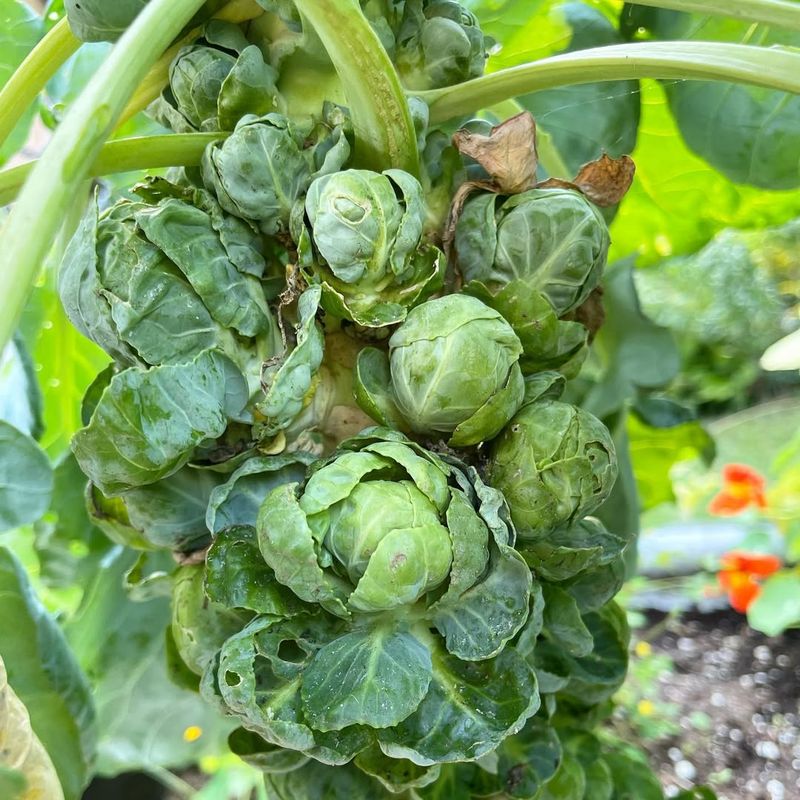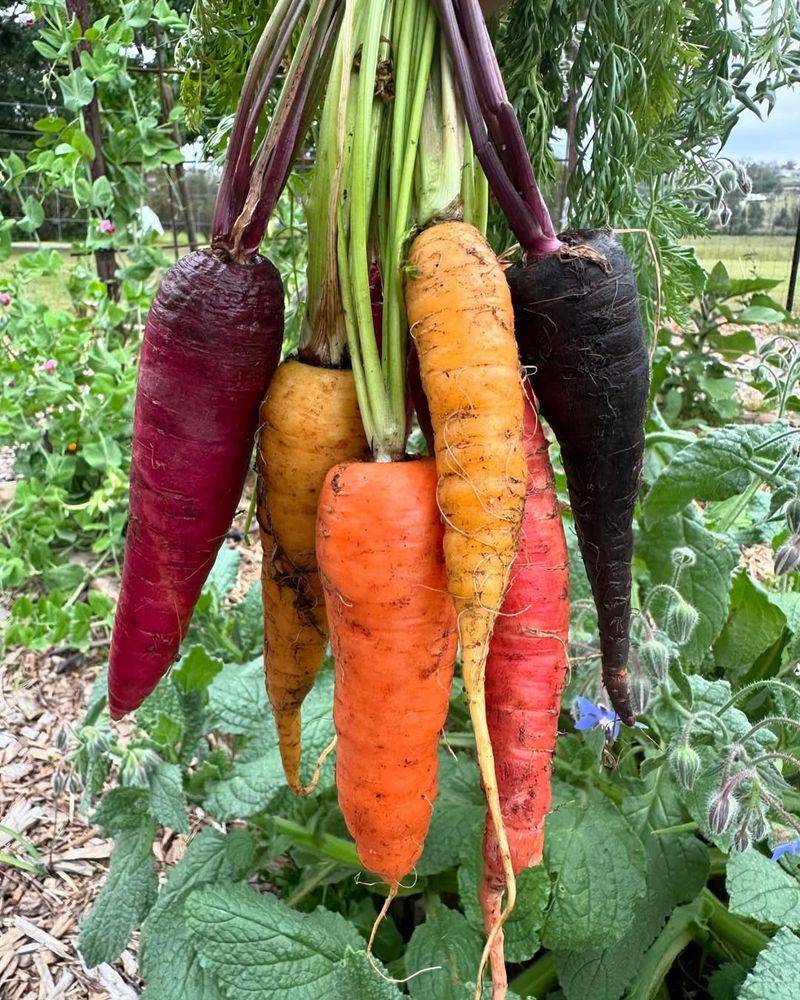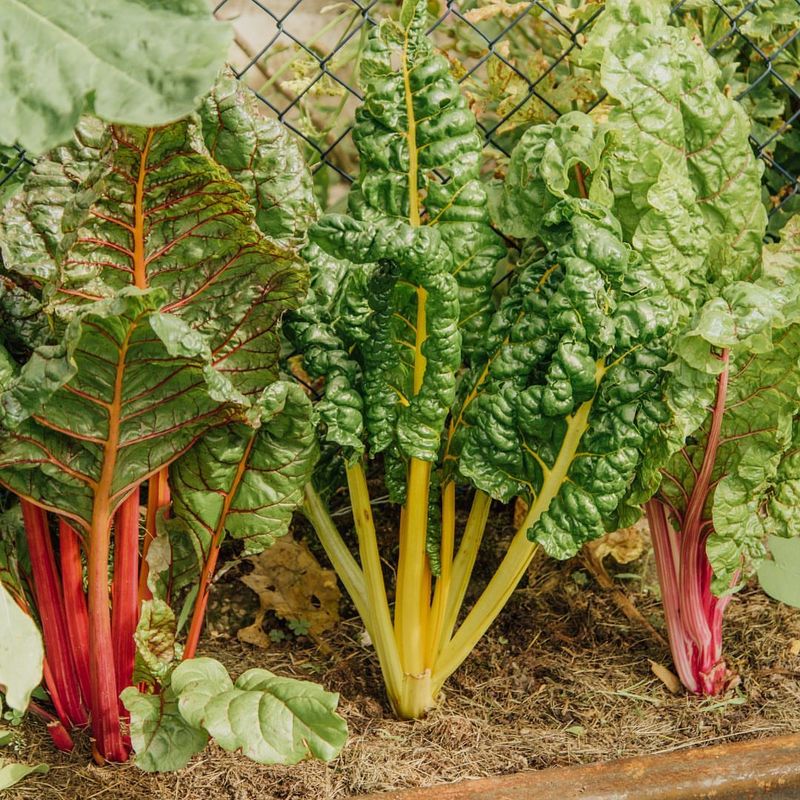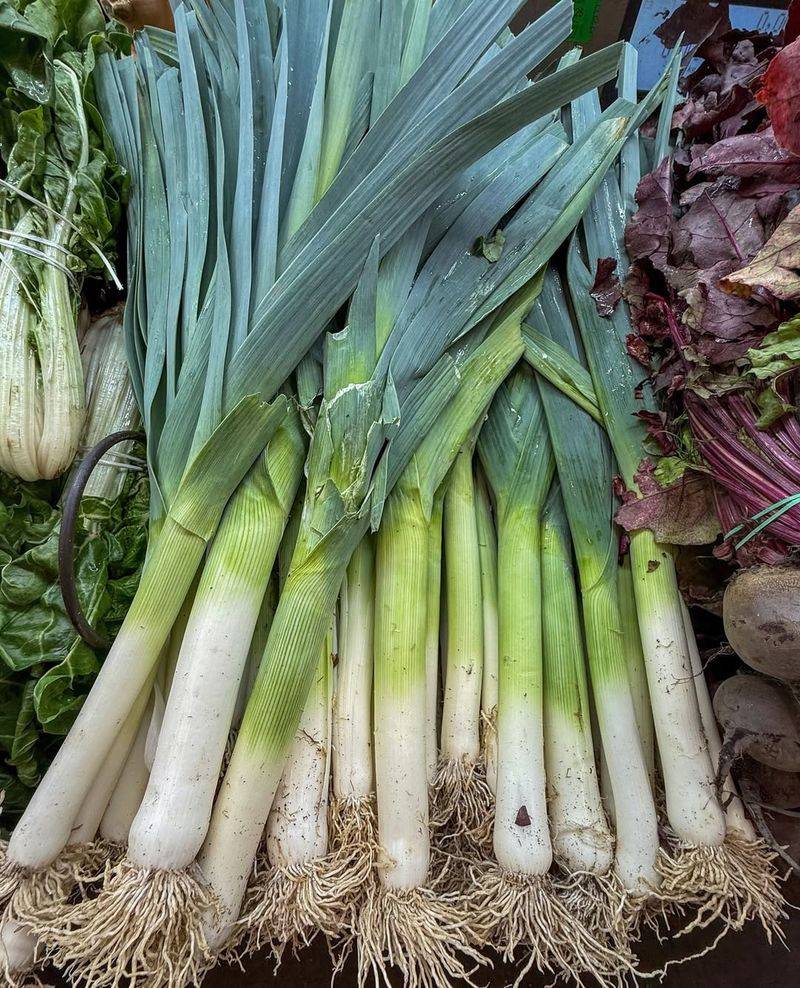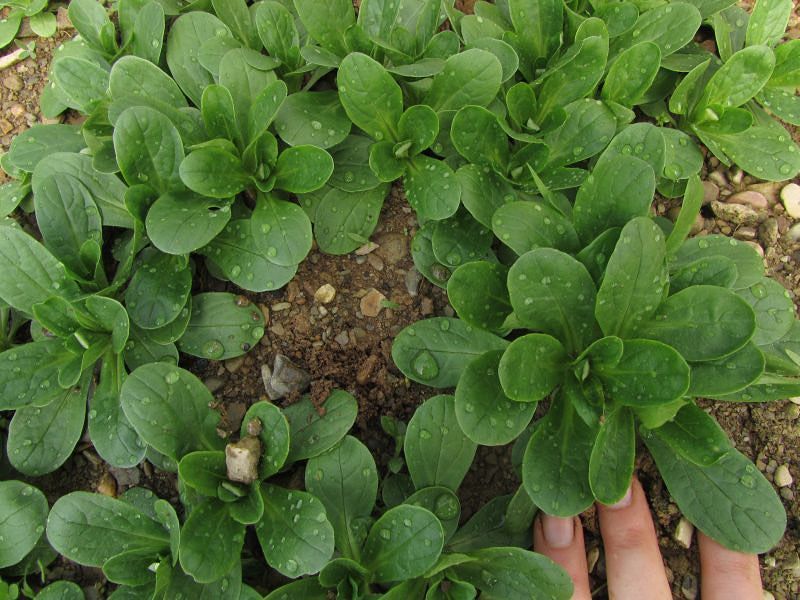Oregon’s December chill puts most crops on ice, yet a handful of veggies stand firm and call the cold their ally.
These frost-proof staples face down biting nights with grit, offering gardeners fresh harvests when the rest of the plot taps out. Each hardy favorite brings flavor, color, and a dash of winter swagger, proving that a well-planned bed still packs plenty of punch long after the thermostat dips.
1. Kale
Cold weather actually makes kale taste sweeter and less bitter. When frost hits the leaves, the plant converts starches into sugars as a natural defense mechanism.
Oregon gardeners love kale because it keeps producing new leaves throughout winter. You can harvest the outer leaves while letting the center continue growing.
Plant varieties like Winterbor or Lacinato for best cold tolerance. Kale can survive temperatures down to 10°F without protection, making it nearly indestructible in Oregon’s mild winters.
2. Spinach
Spinach plants slow down their growth when temperatures drop, but they don’t stop completely. The leaves become thicker and more flavorful during cold months.
Gardeners appreciate how spinach bounces back after freezing nights. Morning frost might make the leaves look wilted, but they perk right up by afternoon.
Sow seeds in late summer or early fall for December harvests. Varieties like Bloomsdale and Space work exceptionally well in Oregon’s climate, providing tender greens for salads and cooking throughout winter.
3. Brussels Sprouts
Few vegetables improve with cold weather like Brussels sprouts do. Frost triggers chemical changes that reduce bitterness and create a nutty, sweet flavor that summer sprouts never achieve.
These plants grow tall and strong, standing proudly through December rains and cold snaps. Start them in spring or early summer for winter harvest.
Pick sprouts from the bottom up as they mature. Oregon’s cool, wet winters provide ideal conditions, and many gardeners say their December harvest tastes better than anything from the grocery store.
4. Carrots
Carrots become remarkably sweet when left in cold ground through winter. The roots store extra sugars to prevent freezing, creating candy-like flavor impossible to find in summer carrots.
Leave them right in the soil and harvest as needed throughout December. The ground acts as natural refrigeration, keeping carrots crisp and fresh.
Mulch heavily with straw to prevent ground from freezing solid, making digging easier. Varieties like Bolero and Napoli handle Oregon winters beautifully and taste incredible after several hard frosts hit your garden.
5. Swiss Chard
Bright stems of red, yellow, and white make Swiss chard a beautiful addition to winter gardens. This relative of beets handles cold remarkably well while adding color to dreary December landscapes.
Cut outer leaves regularly to encourage new growth from the center. Chard keeps producing even when temperatures hover near freezing.
Young leaves work great in salads, while larger ones are perfect for cooking. Fordhook Giant and Bright Lights varieties thrive in Oregon’s wet winters, tolerating frost and providing nutritious greens when other vegetables have long finished.
6. Leeks
Standing tall like soldiers, leeks brave Oregon winters without complaint. These onion relatives actually prefer cool weather and develop milder, more complex flavors after experiencing frost.
Hill soil up around the stems throughout fall to create longer white portions. The white part is the tender, edible section most recipes call for.
Leeks rarely bolt in cold weather, staying in prime condition through December and beyond. Varieties like King Richard and Tadorna handle freezing temperatures beautifully, making them reliable choices for Oregon gardeners wanting fresh alliums all winter long.
7. Mache
Also called corn salad, mache might be the toughest salad green you’ll ever grow. These small rosettes of tender leaves laugh at frost and keep growing when temperatures drop below 20°F.
The buttery, nutty flavor makes winter salads something special. Europeans have grown mache for centuries specifically as a cold-season crop.
Sow seeds in late summer for December harvests. Plants grow low to the ground, making them easy to protect with row covers during extreme cold snaps. Oregon’s mild winters suit mache perfectly, providing fresh salad greens throughout the season.
8. Parsnips
Parsnips require frost to reach their full potential. Before cold weather arrives, they taste woody and bland, but December frosts transform them into sweet, creamy roots with complex flavor.
Leave them in the ground until you’re ready to use them. Many Oregon gardeners wait until after several hard freezes before harvesting.
The long growing season means planting in spring for winter harvest. Gladiator and Hollow Crown varieties perform excellently in Oregon, developing that signature sweetness that makes parsnips a winter favorite for roasting and soups.




